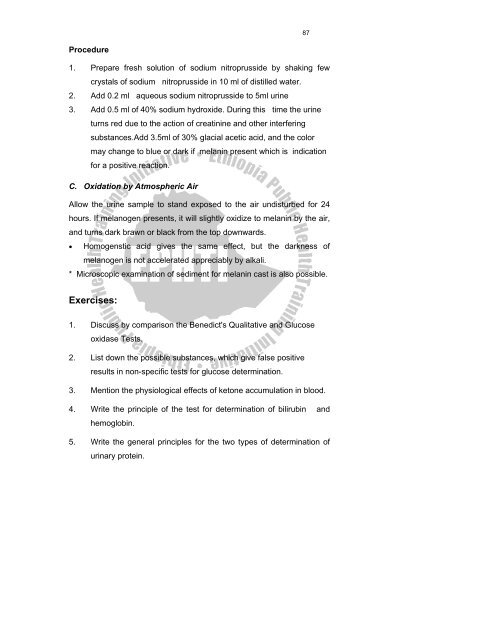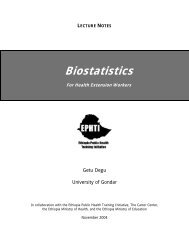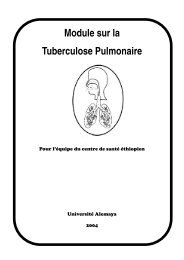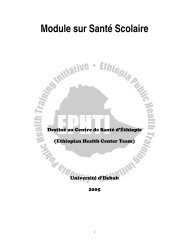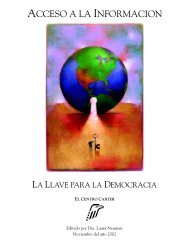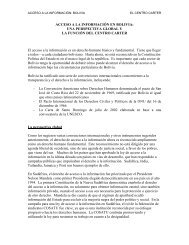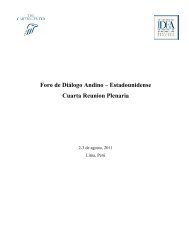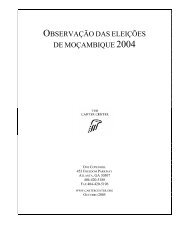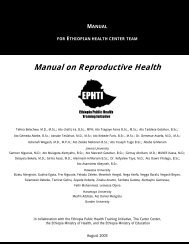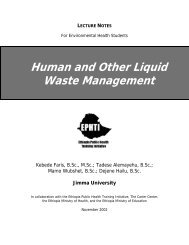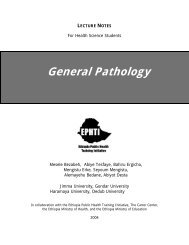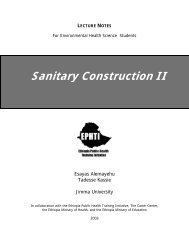Urinalysis - The Carter Center
Urinalysis - The Carter Center
Urinalysis - The Carter Center
You also want an ePaper? Increase the reach of your titles
YUMPU automatically turns print PDFs into web optimized ePapers that Google loves.
87<br />
Procedure<br />
1. Prepare fresh solution of sodium nitroprusside by shaking few<br />
crystals of sodium nitroprusside in 10 ml of distilled water.<br />
2. Add 0.2 ml aqueous sodium nitroprusside to 5ml urine<br />
3. Add 0.5 ml of 40% sodium hydroxide. During this time the urine<br />
turns red due to the action of creatinine and other interfering<br />
substances.Add 3.5ml of 30% glacial acetic acid, and the color<br />
may change to blue or dark if melanin present which is indication<br />
for a positive reaction.<br />
C. Oxidation by Atmospheric Air<br />
Allow the urine sample to stand exposed to the air undisturbed for 24<br />
hours. If melanogen presents, it will slightly oxidize to melanin by the air,<br />
and turns dark brawn or black from the top downwards.<br />
• Homogenstic acid gives the same effect, but the darkness of<br />
melanogen is not accelerated appreciably by alkali.<br />
* Microscopic examination of sediment for melanin cast is also possible.<br />
Exercises:<br />
1. Discuss by comparison the Benedict's Qualitative and Glucose<br />
oxidase Tests.<br />
2. List down the possible substances, which give false positive<br />
results in non-specific tests for glucose determination.<br />
3. Mention the physiological effects of ketone accumulation in blood.<br />
4. Write the principle of the test for determination of bilirubin and<br />
hemoglobin.<br />
5. Write the general principles for the two types of determination of<br />
urinary protein.


